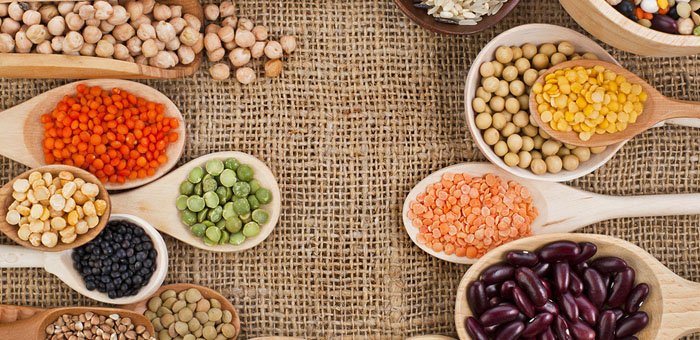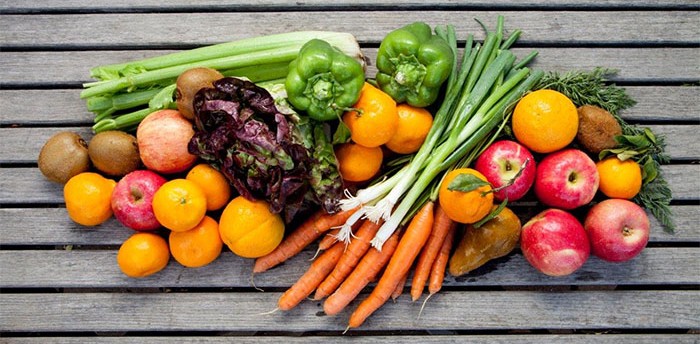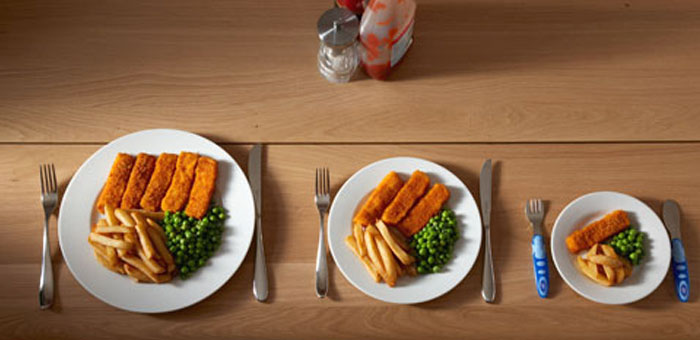Mobile Cuisine is proud to provide our readers with another article designed to inform them about a multifaceted program that is spreading throughout the country. We have designated our Monday features to help promote the Meatless Mondays program which not only do we support on the website, but many of our our staff actually has adopted in our Monday dietary lifestyle. Today we look at helping consumers find protein on food truck menus without being forced to order a dish with meat.
Finding Protein On A Food Truck Without Ordering Meat
In today’s article we will focus on some of the fallacies that most vegetarians or vegans have to deal with every day of their lives. When someone decides to make this dietary leap they are normally questioned by friends and family as to how healthy giving up meat actually is. The critics (usually only informed by propaganda the meat industry has hand fed them over the years), usually come up with the same questions and they are typically centered on protein intake.
We want to dispel a number of myths related to protein, since this argument seems to be always brought up when trying to dissuade people from eliminating meat from their diet, even if the program only promotes giving up meat on a single day of the week.
During the 6 months I spent as a full time vegetarian the word on the street about vegetarians was that we didn’t get enough protein. If I didn’t eat meat how in the world was I getting the amount I needed? According to those who questioned me, meat is the ONLY viable source of protein. This may be the most commonly held misconception about a vegetarian diet. People fail to realize that meat is not the only source of protein in nature and today, we are going to prove it.
What is protein?
- Proteins are an important building block for your hair, skin, nails, muscles, hormones, blood, and immunity. You cannot survive without proteins.
- Proteins are polypeptides (i.e. amino acid chains) which are essential for cellular health. Your body already produces most amino acids, but there are 9 amino acids that are essential and must be sought out.
- Protein, along with fats and carbohydrates, are considered macronutrients, meaning your body needs large quantities of them to function.
- Every gram of protein has 4 calories
- Proteins are classified as either “complete” or “incomplete” based on whether all 9 essential amino acids are present.
Common Protein Myths
- You can only get protein from animal sources. The only way this statement we’re true is if we modified the word protein with the word “complete”. And that’s where we believe this myth comes from, people associating complete protein as the only true protein.
- You need to eat a lot of protein daily. People have been misled to think that they need to load up on protein to be healthy, the more protein the better. Well, this is false. Americans actually consume MORE than the necessary amount of daily protein. While there is no agreed amount for required daily protein intake, some scientific bodies have put it around 10%-20% of daily calorie intake (given that you take the recommended calorie intake). And some have suggested that you eat half a gram of protein for every kilogram of body weight.
Sources Of Protein
Legumes
Legumes are also called dried beans are edible seeds that grow in pods. Examples are chickpeas, split peas, haricot, lentils (red, green or brown), kidney beans etc.
Nuts & seeds
Nuts are fruits that have a hard outer shell that encloses a kernel, which is also called a nut. Seeds are contained in fruits of plants and are capable of reproducing a new plant. Many nuts and seeds are available both in and out of the shell, whole, halved, sliced, chopped, raw, or roasted example are cashew, peanuts, walnuts, almonds.
Dairy products
Dairy foods are products made from milk, the liquid secreted by female mammals for suckling their young. Choose nonfat or low-fat milk, yogurt and cheese for daily consumption. Save high-fat cheeses and ice cream for occasional treats.
Cereals & food grains
Grains are the seeds or fruit of cereal plants, used as food by humans and animals. Choose whole grain flours, cereals, wheat & rye breads, buckwheat pancakes, muffins & scones, noodles and pasta. Check the nutritional facts panel on the label for fat, sugar, and additives. Eat grain with complementary protein. Experiment with high quality grains, such as amaranth and quinoa.
Soyabean
A versatile bean use extensively in cooking, the soybean also serves as the basis for a wide variety of soya foods consumed. Soybeans are the richest plant source of high-quality protein. The most common soya form is still tofu, but today, the soybean takes on many other forms, including burgers, dogs, bacon, sausage, and many other meat substitutes.
Seitan
Seitan has been used in Asia as a protein source and meat substitute for hundreds of years. It can be prepared from scratch using whole-wheat flour. The flour is mixed with enough water to make into a dough that is then kneaded in water and rinsed to remove the starch and the bran. The protein, or gluten, remains and is then simmered in a broth flavored with soya sauce to become seitan.
The longer the gluten simmers, the more firm it becomes. Seitan can then be sliced for sautés or stir-fries, diced into stews, soups, or casseroles, or formed into roasts. People who are allergic to wheat or wheat gluten should avoid seitan. Do not use if you are gluten-sensitive. A good source of protein delivering 23g/30 gms of Seitan.
Vegetables
Vitamins are loaded with vitamins and minerals essential for varied body processes and have been shown to provide protection against a variety of illnesses. Textured vegetable protein is also a good substitute for ground beef in dishes such as tacos, chilli, and stews.
Eggs
Brown or white? Either and both is a source of complete protein. The color of the egg’s shell is simply an indicator of the breed of hen that laid the egg. Eggs yolks are among the few foods that contain vitamin D. Eggs are the centerpiece of a range of foods. Many egg dishes, such as omelets and frittatas, can be prepared quickly with many interesting fillings, such as peppers, tomatoes, or zucchini.
RELATED: Veganizing Your Menu For Meatless Monday
The Bottom Line
Consumers choosing to follow a Meatless Monday lifestyle don’t need to worry about avoiding food trucks. Even if a truck’s primary focus is meat for protein, you still have many options to fill up without ordering a dish with meat.
We hope that those of you that have avoided joining this movement because of the protein fallacies you’ve been taught over the years, can take the information from this article, to help yourself take a healthy step the next time you are planning to find a food truck on Monday.
Please do your part today and join the Meatless Monday movement? Signing up is fast and easy! Follow them on Twitter.




